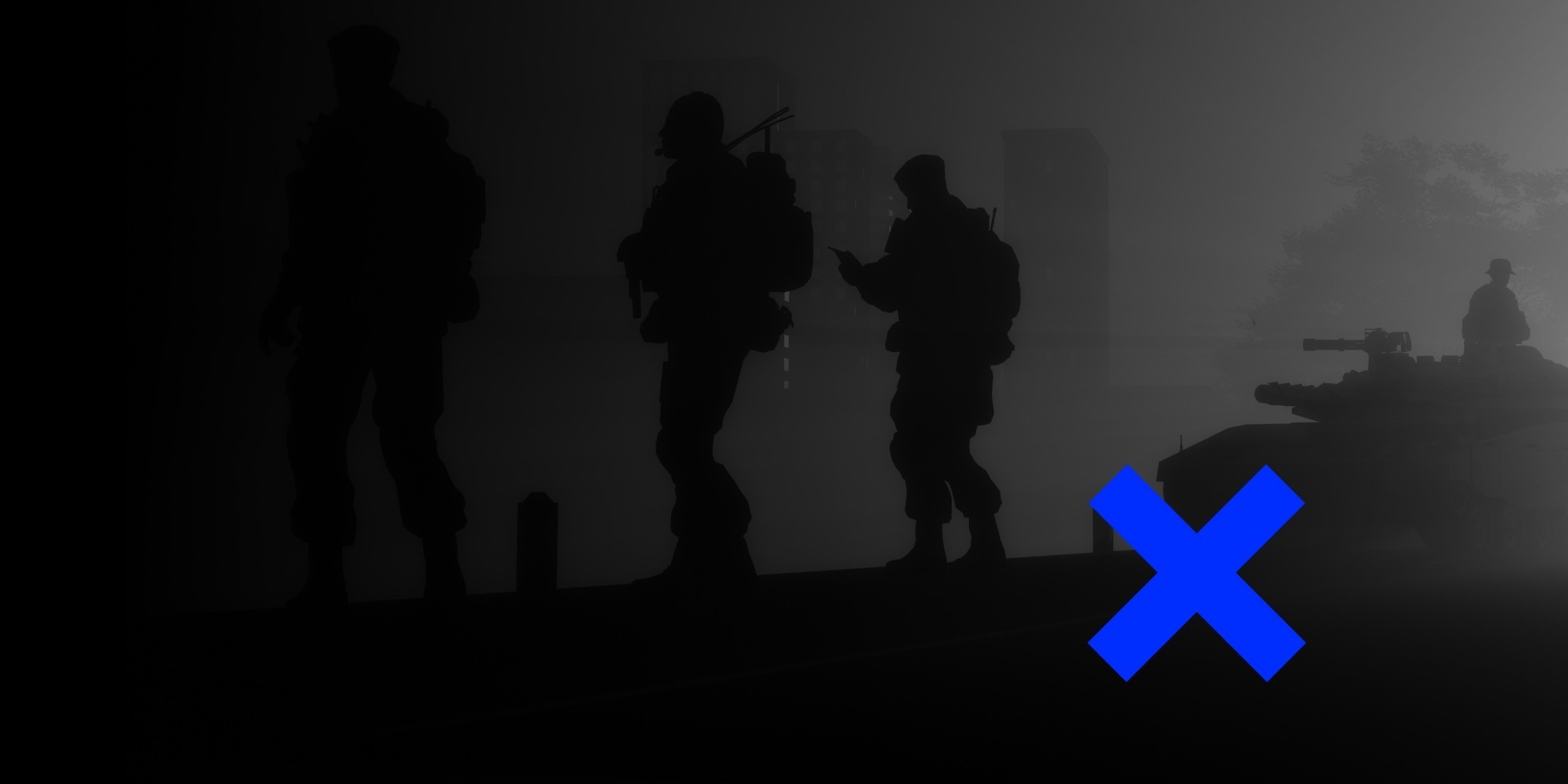In November 2022, VoxCheck monitored media from Poland, Slovakia, Hungary, the Czech Republic, Italy, and Germany and found 714 cases of disinformation about Ukraine. We found the most cases of disinformation in German (155), Polish (152), and Czech (118) media. The kremlin’s narratives about the West’s complete control over Ukraine, Ukraine’s “war crimes and terrorist attacks”, and the justification of russian aggression were most actively promoted in the European media in November.
VoxCheck monitors the media in European countries (Germany, Italy, the Czech Republic, Slovakia, Poland, and Hungary) and analyzes the disinformation narratives about Ukraine spread by these media. For the most part, the detected fakes and manipulations are consistent with the main narratives of russian disinformation campaigns. Every month, the VoxCheck team publishes a report on the monitoring results. All disinformation messages, grouped into narratives and their refutations, will be displayed on the “Propaganda diary” database website.
Poland
While monitoring nine Polish mass media, we discovered 152 cases of disinformation, which we grouped into 21 narratives. The largest number of cases were related to narratives about Ukrainian refugees (22 cases), justification of Russian aggression (20 cases), and Western control over Ukraine (18 cases).
The image of Ukrainian refugees, which the media try to construct in fake messages, is that they are ungrateful, impolite, aggressive, arrogant people who abuse the kindness of the Polish and other EU nations. They do not look for work, live only at the expense of social and humanitarian aid, spread Nazi ideology in Europe, commit crimes (murders, thefts), and demand from Europeans to speak Ukrainian. Fake authors say that now in Poland, Ukrainian interest prevails over Polish interest, and the Polish government has done more for Ukrainians in 4 weeks than for Poles themselves in the last seven years. It is said that because of this, the Polish and Ukrainian peoples will never be able to become truly “fraternal”.
The “anti-democratic regime” in Kyiv, the support of the Nazis by the USA, the expansion of NATO in Eastern Europe, the violation of the rights of the residents of Donbas, especially the Russian-speaking ones, all this, according to the Polish disinformation media, proved the need for Russia’s intervention in the internal affairs of Ukraine and the violation of its territorial integrity. In addition, Russia’s actions were called a humanitarian intervention — a justified use of force to minimize civilian casualties.
In the narrative about the West’s control over Ukraine, the media were “confused in their statements”: if some called Great Britain the main “curator” of Ukraine, others considered the USA to be such a leader. At the same time, they are united in shaping the goals of Western politicians in Ukraine: to use Ukrainians as “cannon fodder” to weaken Russia and to convince the Ukrainian leadership to abandon a peaceful resolution of the conflict. Also, the media took out of context NATO Secretary General Stoltenberg’s quote about the training of the Ukrainian military from 2015 and stated that the alliance had been preparing for a confrontation with Russia for at least seven years.
Two narratives are unique to the Polish informational space — “Poland plans to occupy Ukraine” (6 cases) and “Poles are discriminated against in Ukraine” (2 cases). In the first case, it is about the fact that the ruling elite of Poland has long been planning various forms of seizure of all of Ukraine or at least its western regions, and in the second — about the violation of the religious, cultural, and political rights of Polish citizens on the territory of Ukraine.
Slovakia
As a result of monitoring nine media in Slovakia, we found 118 cases of disinformation, which can be grouped into 16 narratives. Narratives about the discrediting of representatives of the Ukrainian government (17 cases), the total control of the West over Ukraine (17 cases), and the “inevitable” loss of Ukraine in the war with Russia (15 cases) turned out to be the most widespread.
President of Ukraine Volodymyr Zelenskyi became the main object of discredit among Ukrainian politicians in the European media. In an attempt to reduce the seriousness of his perception, to ridicule him, the author of the articles called the president a clown, a comedian in the role of the president, a madman, a warmonger, a dictator, and a puppet of the West. The mass media also wrote that he is pursuing an anti-people policy: he continues the war with Russia, although the Ukrainian population would like to peacefully resolve the conflict with Russia. Meanwhile, interest in both Zelenskyi and Ukraine, in general, is fading in the US, and the American administration humiliates the president when he takes any steps without consulting Washington.
In addition to Zelenskyi, the media discredited Kyrylo Budanov, the head of the Main Directorate of Intelligence — he was called a former criminal. And about Olena Zelenska, the first lady, the media said that she treats the population with contempt because she believes that Ukrainians are ready to endure difficulties for the sake of the European future.
As part of the narrative about Western control over Ukraine, Slovak media spread both old and new fakes. In particular, among the old fakes, the 2014 Revolution of Dignity was mentioned, as a result of which, according to the propagandists, Ukraine became a colony, a consumable for Europe and the USA. Under pressure from the West, Ukraine allegedly carried out repression against the political opposition inside the country and refused to comply with the Minsk agreements to settle the war in Donbas. The new fakes are directly related to the period of the full-scale invasion of the Russian Federation in 2022. In this narrative, Ukraine acts as a tool of the United States, which is not interested in ending the war, to weaken Europe, Russia and increase the profits of the American military-industrial complex. Over time, fake authors say, Ukraine should turn into a “second Afghanistan” for the United States.
At the beginning of November, the inevitable defeat of Ukraine in the war was discussed in the media in the context of the battle for Kherson. The mass media wrote that Ukraine does not have enough people or weapons to de-occupy the Kherson region. Already after the retreat of Russian troops from Kherson, the media slightly adjusted the narrative: the escape of the Russian Federation was not considered a defeat, and Russia was still able to achieve its strategic goals in the war because the Ukrainian state would not last more than two months. In addition, the media emphasized the inefficiency of Western air defense systems, which cannot counter Russian missile strikes, and the population’s fatigue from the war, which will soon lead to an uprising against the Ukrainian authorities.
In November, the narrative “Ukraine must compromise with Russia” continued to spread (7 cases): in the mass media, it is said with the same persistence that only direct peace negotiations with Russia (in some cases, it is directly written about the need for Ukraine to surrender) will save the country from complete collapse on the battlefield and in the rear.
Hungary
We monitored 11 Hungarian publications, found 104 cases of disinformation, and distributed them among 18 narratives. The most common were the narratives about the control of Ukraine by the West (18 cases), accusing Ukraine of terrorism (16 cases), accusing Ukraine of creating the European and world crisis (15 cases), and justifying Russian aggression (14 cases).
Conspiracy theories remain the basis of the narrative about Ukraine’s control of the West. Yes, the Hungarian media wrote in November that the Russian-Ukrainian war is only a small part of the West’s big game. In addition to the war in Europe, the West is allegedly actively provoking a clash between China and Taiwan, as well as contributing to the food and energy crisis in the world. Ukraine is deprived of subjectivity in this story. The media even quoted Prime Minister Viktor Orbán as saying that future peace talks would take place between Moscow and Washington, not between Moscow and Kyiv.
The media ttried to prove the “terrorist essence” of Ukraine with several theses. First, the “intentions” of the Ukrainian military to blow up the Kakhovska HPP in the Kherson region, which will lead to numerous victims among the civilian population. Secondly, the media repeated the statements of the Russian Federation that the Armed Forces of Ukraine terrorize the population of the occupied territories, constantly shelling civilian objects.
Accusing Ukraine of organizing the European and world crisis, the authors of the materials emphasized that anti-Russian sanctions harm Europe more than Russia and in no way accelerate the end of the war. In their opinion, not only the sanctions are destructive, but also the economic and military aid given to Ukraine. For example, instead of supporting Ukraine, the USA could allocate additional resources to solve its own problems.
Several fakes were used to justify Russian aggression in the Hungarian media: the constant oppression of national minorities in Ukraine, in particular the Russian minority, the demonstrative promotion of NATO in Ukraine, Ukraine’s plans to restore nuclear weapons, and Ukraine’s failure to fulfill the Minsk agreements.
Another common narrative about Ukrainians who want to join Russia (7 cases) was the repetition of fakes about “honest expression of will” in Russian pseudo-referendums in Crimea in 2014 and in Zaporizhzhia, Kherson, Donetsk, and Luhansk regions in 2022.
Czechia
Within the monitoring of 13 Czech media in November, we discovered 118 cases of Russian disinformation. We highlighted the most messages within the narratives that Nazism is a widespread ideology in Ukraine (21 cases), Russia’s aggression is justified (20 cases), Russia does not commit war crimes in Ukraine (14 cases), and the discrediting of the Ukrainian authorities (14 cases ).
Several fakes substantiated the promotion of Nazi ideology in Ukraine: information leaks about the presence of Nazi symbols on the uniforms of soldiers of the Armed Forces of Ukraine, the repetition of claims about the “Nazi essence” of the “Azov” regiment, which have long been refuted, and historical myths about the decisive role of Nazis in the political events of Ukraine since the 2014 year. The media also noted that the USA has long been actively supporting Nazis and other radicals, so supporting Nazism in Ukraine is not a new practice for Americans. An example of “uniting the United States with the Nazis” is the refusal of Ukraine and the United States to vote against the Russian draft of the UN resolution on the fight against Nazism.
The narrative about Nazism is closely related to the following mass narrative about the justification of Russian aggression. Thus, one of the publications directly stated that Russia, as the heir of the USSR, had the right and duty to fight neo-Nazism. In addition, fakes spread the idea that Russia only wanted to adhere to the Minsk agreements and restrain the expansion of NATO in Europe. Whereas the USA “held captive” peaceful Ukrainians, and the Ukrainian authorities perceived Russia’s peacefulness as a weakness and were preparing to attack first. Thus, Russia seems to have no choice but to invade.
Russian war crimes are tried to be silenced in the media, and instead, they talk about the fictional crimes of the Armed Forces of Ukraine — as if they were torturing and killing Russian prisoners. And Ukrainian cities, according to them, are not being shelled by Russia but by the Ukrainian military themselves with anti-aircraft missiles.
In order to discredit the government, fake authors chose two main representatives of the military-political leadership — President Zelenskyi and Commander-in-Chief of the Armed Forces of Ukraine Zaluzhnyi. The first was accused of constant lying, drug addiction, clowning, and Nazism. And the second — in corruption and abuse of power.
A narrative with historical fakes was also common (6 cases). For example, in one of the cases, the unity of Ukraine was denied, it was called an artificial state consisting of three separate historical parts. In other cases, the media openly declared that Ukraine has always been a part of Russia and repeated the statements of Russian politicians that Kyiv “was and is a Russian city.”
Germany
During the monitoring of 19 German media, we found 155 cases of disinformation and 19 narratives corresponding to these cases. Most cases were about the Ukrainian army allegedly committing war crimes (47 cases), discrediting representatives of the Ukrainian government (14 cases), and narratives about Nazism in Ukraine (13 cases).
Most often, propaganda media mention “war crimes of Ukraine” in the context of shelling of the temporarily occupied territories of Ukraine. For example, the shelling of the occupied Donetsk region, during which civilians were killed, for which only the Ukrainian military is blamed. The Armed Forces of Ukraine are also named as the main culprits for the shelling of crossings for civilians in the Kherson region, which prevents civilians from safely evacuating from the war zone. Inhumane conditions, torture in captivity, executions of collaborators — all these crimes are also tried to be attributed to Ukrainian soldiers.
Representatives of Ukraine are discredited and ridiculed for their desire to fight “to the last Ukrainian” — this is allegedly evidenced by Zelenskyi’s decree on the refusal of negotiations with the Russian president. Moreover, the mass media claim that Ukraine is hindering the fight against hunger by blocking the export of Russian fertilizers to vulnerable countries. And the image of the Ukrainian state in the international arena is false — in fact, if you believe disinformation from some German media, Ukraine suffers from corruption and violates democratic principles.
However, not only representatives of the top management are mentioned in disinformation messages — but fakes are also spread about the activities of ordinary Ukrainian soldiers (12 cases). The articles say that Ukrainian commanders despise their subordinates, mislead them and force them to go on the offensive against a much stronger enemy. Also, as a result of the poor provision, soldiers remain without food and water for several days.
To accuse Ukraine of spreading Nazism, the authors of the materials use several fakes. First, the “Ukrainian regime” allegedly has been spreading racial hatred and Russophobia among its citizens for many years, particularly in educational institutions. And in children’s camps, schoolchildren are even taught to kill Russians, who are called “underdogs”. Second, the media discredits the well-known Ukrainian slogan “Glory to Ukraine! Glory to the heroes!”, calling it Nazi. Third, the symbols of “Azov” and other Ukrainian military units are allegedly “reliable” evidence of Nazi ideology in the troops.
The German media also mentioned a recent event — the fall of a rocket on the territory of Poland after a Russian missile attack. The authors of the fake are convinced that Ukraine deliberately attacked the territory of the NATO country (5 cases). Ukraine allegedly needed this in order to increase military aid to the West and force it to fight against Russia.
Italy
During the monitoring of 23 Italian media in November, we found 67 cases of disinformation that corresponded to 12 narratives. We recorded the largest number of disinformation cases (21) within the narrative that Ukraine is a “terrorist state”, about Western control over Ukraine (14 cases), and about Russian war crimes (6 cases).
According to the Italian pro-Russian media, shelling of “peaceful Donbas” with Western weapons is yet another proof of Ukraine’s terrorist methods. The list of “terrorist attacks in Ukraine” also includes the shelling of the Kakhovska HPP, in which the Armed Forces of Ukraine are allegedly involved. The narrative about terrorism is closely related to fakes about the West’s control over Ukraine: for example, one of the cases talked about how the British military trains Ukrainians so that they can carry out more effective terrorist attacks.
As part of the narrative about Western control over Ukraine, the Italian mass media repeated the thesis of representatives of the Russian Federation that “in fact” the Russian military is not fighting the Ukrainians, but the entire NATO military machine. However, not all NATO countries will receive the same benefits from supporting Ukraine: fakes often mention that the continuation of the war is primarily in the interests of the US, not the EU. Moreover, the US desire to strengthen Ukraine will turn out to be a failure for it: pro-Russian speakers, on the contrary, predict the strengthening of Russia’s military power after the end of the war.
In order to defend Russia against accusations of war crimes, some Italian media quoted Kremlin Speaker Dmytro Peskov as saying that Russia does not strike civilian targets in Ukraine. And those peaceful objects that suffered from destruction are actually the consequences of the use of missiles of the Ukrainian air defense system. Another accusation against Ukraine was the thesis of constant violations of the rights of Russian prisoners of war.
Did not forget to spread narratives in the Italian space about dangerous biolaboratories in Ukraine (5 cases) and Ukraine’s threats to stage a nuclear disaster at the ZNPP (5 cases). Russia uses both narratives to accuse Ukraine of using weapons of mass destruction (biological and nuclear, respectively).
Attention
The authors do not work for, consult to, own shares in or receive funding from any company or organization that would benefit from this article, and have no relevant affiliations




